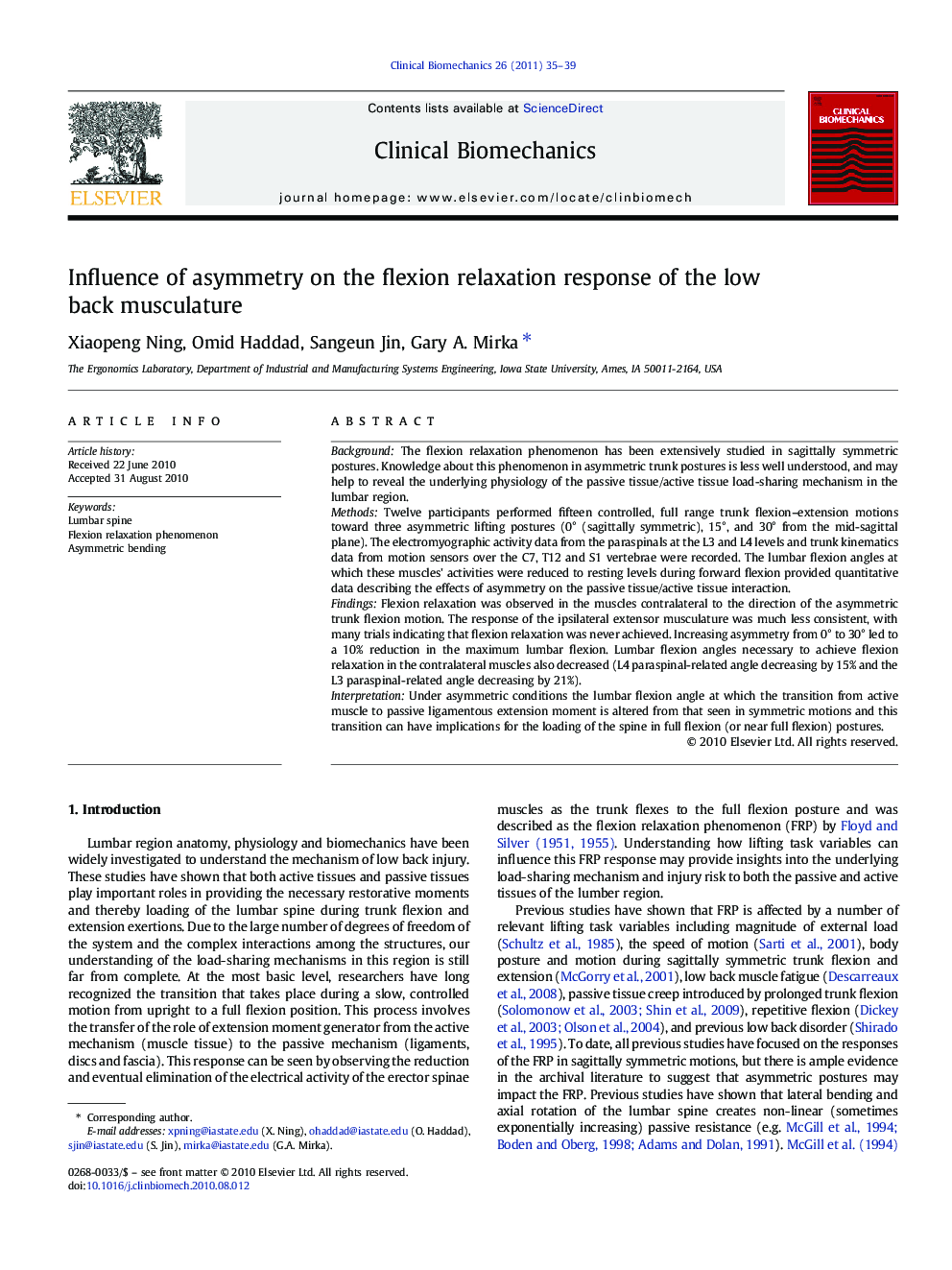| کد مقاله | کد نشریه | سال انتشار | مقاله انگلیسی | نسخه تمام متن |
|---|---|---|---|---|
| 4051002 | 1264969 | 2011 | 5 صفحه PDF | دانلود رایگان |

BackgroundThe flexion relaxation phenomenon has been extensively studied in sagittally symmetric postures. Knowledge about this phenomenon in asymmetric trunk postures is less well understood, and may help to reveal the underlying physiology of the passive tissue/active tissue load-sharing mechanism in the lumbar region.MethodsTwelve participants performed fifteen controlled, full range trunk flexion–extension motions toward three asymmetric lifting postures (0° (sagittally symmetric), 15°, and 30° from the mid-sagittal plane). The electromyographic activity data from the paraspinals at the L3 and L4 levels and trunk kinematics data from motion sensors over the C7, T12 and S1 vertebrae were recorded. The lumbar flexion angles at which these muscles' activities were reduced to resting levels during forward flexion provided quantitative data describing the effects of asymmetry on the passive tissue/active tissue interaction.FindingsFlexion relaxation was observed in the muscles contralateral to the direction of the asymmetric trunk flexion motion. The response of the ipsilateral extensor musculature was much less consistent, with many trials indicating that flexion relaxation was never achieved. Increasing asymmetry from 0° to 30° led to a 10% reduction in the maximum lumbar flexion. Lumbar flexion angles necessary to achieve flexion relaxation in the contralateral muscles also decreased (L4 paraspinal-related angle decreasing by 15% and the L3 paraspinal-related angle decreasing by 21%).InterpretationUnder asymmetric conditions the lumbar flexion angle at which the transition from active muscle to passive ligamentous extension moment is altered from that seen in symmetric motions and this transition can have implications for the loading of the spine in full flexion (or near full flexion) postures.
Journal: Clinical Biomechanics - Volume 26, Issue 1, January 2011, Pages 35–39